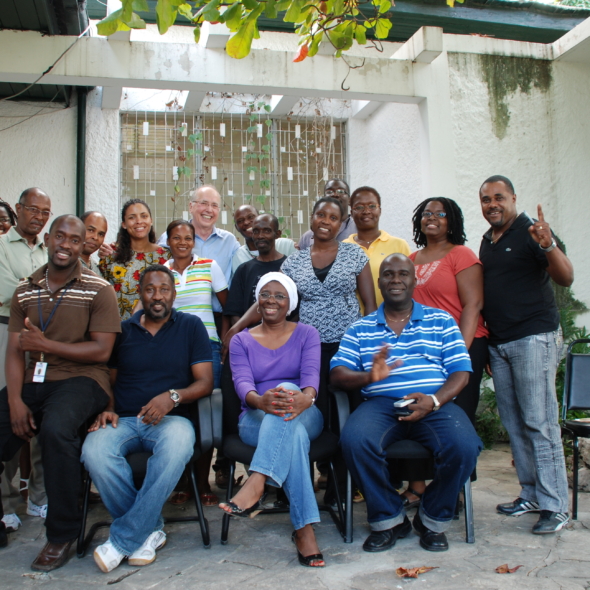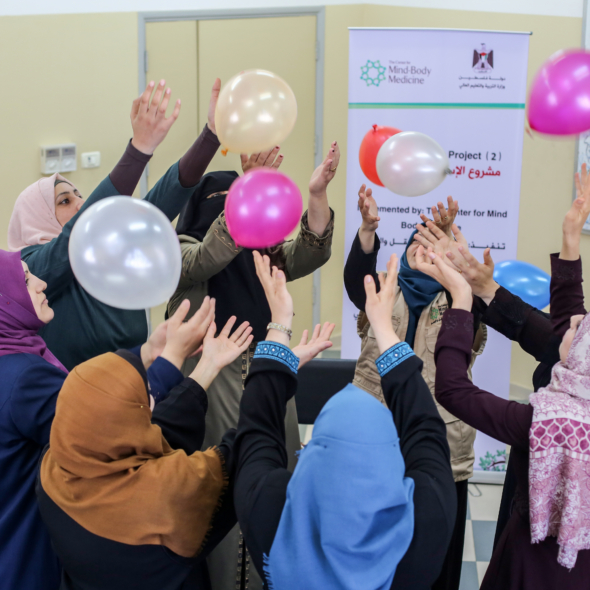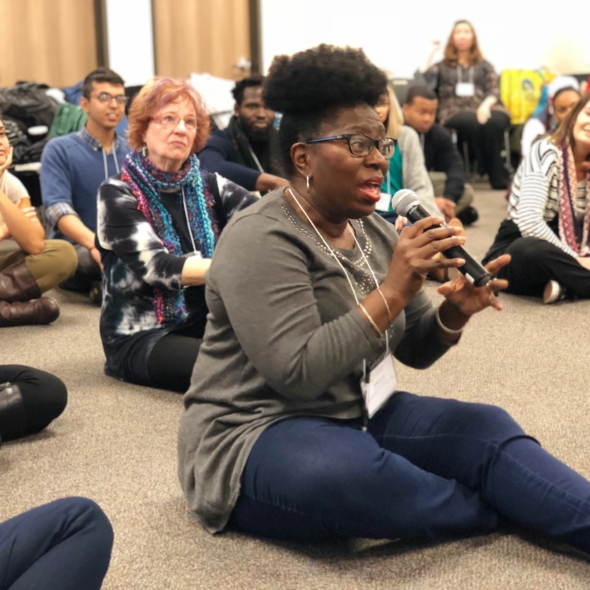A hundred nursing students come to our hotel. More than ninety of their classmates died on January 12th in their school building. The sense of sadness and loss are palpable.
They are quiet, expectant, and perhaps a little puzzled at first. What is this “mind-body medicine” all about? And then, as I begin to talk with them about fight-or-flight and stress, they become animated—calling up the unspeakable terror of the earthquake along with the biological facts and personal experience. I explain that just as trauma can produce the symptoms of ongoing stress: difficulty concentrating, sleeplessness, anger, lethargy, flashbacks of death and destruction. The techniques we are going to teach—slow deep breathing, self-expression and self-discovery in drawings, sharing one’s pain and hopes with others, and moving one’s body—can give relief; restore a sense of calmness, provide perspective, grant them a sense of control, open the door to the possibility of a future.
By the time Amy is explaining imagery and Kathy and Lynda are encouraging them in their drawings, the young women are alive with pleasure and discovery. They share first with each other, and then with the whole group. They show us pictures bisected by the barriers between the living and the dead, whom they miss so much, and third drawings that reveal the possibility of feeling, though bereaved, whole again in nature and with family and friends.
By the time we clear away the chairs and began to shake, the girls are waving their arms and laughing. When Bob Marley’s “Three Little Birds (Every Little Thing’s Gunna Be Alright)” comes on, they sing with him, and us. Some of us are still laughing, others crying in release, with gratitude as well as grief.
Afterwards, the Dean of the Nursing School speaks for a moment. “Words,” she says, herself crying, “cannot express what you have done for us today.”
“And,” I think to myself, “what you are doing and teaching to us.”


